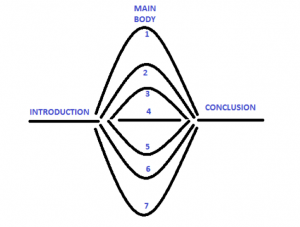Doing a Great Presentation
Who needs to give presentations?
- Students
- Teachers
- Leaders in Organisations
- Employees
- Salespersons
- Scientist
- Engineers
NEARLY EVERYONE AT SOME POINT IN THEIR LIVES!
Why do we present?
- Communicate ideas / information from the source to the recipient – INFORM
- Make the audience see things as you (the speaker) see things or how you want them to see things – PERSUADE
Common mistakes
(or 10 ways to ruin your presentation!)
- Cram your slides with numerous text bullet points and multiple fonts.
- Take a really long time to explain what your talk is about.
- Speak at great length about the history of your organization and its glorious achievements.
- Make sure you subtly let everyone know how important you are.
- Speak slowly and dramatically. Why talk when you can orate?
- Use lots of unexplained technical jargon to make yourself sound smart.
- Refer to your book / notes repeatedly. Even better, quote yourself from it!
- Sound as if you’re reciting your talk from memory.
- Don’t bother rehearsing to check how long your talk is running.
- Never, ever make eye contact with anyone in the audience.
Tips
- Prepare
- Structure your presentation
- Use Media to illustrate
- Body language – Voice
- Connect with audience
- Rehearsal
Prepare, prepare, PREPARE!
- Know your subject!
- Research all avenues / know your material
- Draft first (treat it as if it is your friend)
- Know your scope, know your audience
- Map out your thoughts before even the first slide is done
- Go early on the day (if able)
- Check the room beforehand (if able)
- Don’t get snagged on Audio Visual equipment pitfalls (cables, connectors, supplies, etc.)
- Have a soft copy as a backup of your talk and supplementary materials, in a thumb drive.
- Print your talk – for additional backup!
Know Your Audience
Find out as much as you can about your audience BEFORE you present to them.
- Who are they?
- Why are you standing before them?
- What do they want / expect?
- What do they need?
- If questioning, what are they asking?
Remember: the talk is about THEM… not about You!
Structure your Presentation
Structuring: – beginning – middle – end
– visual / verbal indications of sequence of points

Weaving: linking points to experience/needs of audience, show benefits, link to other points
Structure your Presentation
- Adding support: supporting points, features, advantages, visual illustrations, examples
- Put Yourself into it: stating importance, use humour, ask questions if able, voice, body
Use Media
- Text (shape, size, colour, positioning, etc.)
- Pictures (+ jokes) Animations
- Videos
Creating Your Slides
Golden Rule of Slides Creation – there is none! But there are certain things to avoid:
- Too much text / text too small
- Giving them all the info at once
- Giving out your slides before you start???
- Using too many slides
- Reading the slides
- Too flashy
- Too bland
Unspoken Signals
- Clothing / way of dressing
- Body stance and facing
- Eye contact
- Hands – Presentation Strike Zone
- Movement about the room
- Fiddling with props / watch checking
- Breathing!
Let Them Hear YOU – the Confident YOU (Projecting Yourself)
- Allow audience to learn your accent
- Volume / Tone
- Pace (can vary it) / Pauses
- Choice of Vocabulary
- Humour / Jokes
Fielding questions – Answer me this… (1/2)
- Engage the questioner: listen-pause-credit
- Repeat back / verify what you heard
- Understand what the questioner wants / needs (What is their intent?)
- Thank for an interesting question
- THINK BEFORE YOU SPEAK (5 second rule)
- Be clear / speak slowly
- Watch your reactions (facial expressions / body language)
- Avoid side tangents / private conversations
- Admit when you don’t know the answer / DON’T FAKE IT
- Make yourself available at the end of the talk
- Bridge by asking question back
Rehearsal
For: timekeeping, body language, voice, pace, logical order, etc.
- Visit venue
- Ask friends’ feedback on delivery and content
- Time management
- Visual aids, ppt, etc.
- Other equipment?
- Reflect
Killer Presentations (in 5 easy steps)
- Frame Your Story
- Plan Your Delivery
- Develop Stage Presence
- Plan the Multimedia
- Putting It Together
Don’t worry!
Nobody can see how you feel!
Pretend to be confident (even if you’re not!).
– Everybody feels nervous
– Nobody can see how you feel – project confidence (even if you’re not!)
- Gain inner control – find few mins of quietness
- Breathe slowly and deeply
- Use nervous tension as a generator for force and dynamism
- Smile
- No one is out to get you!
Just before … final thoughts
You prepared as much as possible…
BUT something unpredictable happens! Go with the flow. Not everything will go according to your plan.
Take a deep breath and improvise.
Some useful references
Steve Jobs Answers Tough Questions
Great slides
10 tips on how to make slides that communicate your idea, from TED’s in-house expert
Giving great talks
The Top 5 TEDTalks on how to give a great TED talk
Present like Steve Jobs
https://www.youtube.com/watch?v=iJq-thyDF9Q&list=WL&index=102
Body Language (Amy Cuddy)
 TOP
TOP